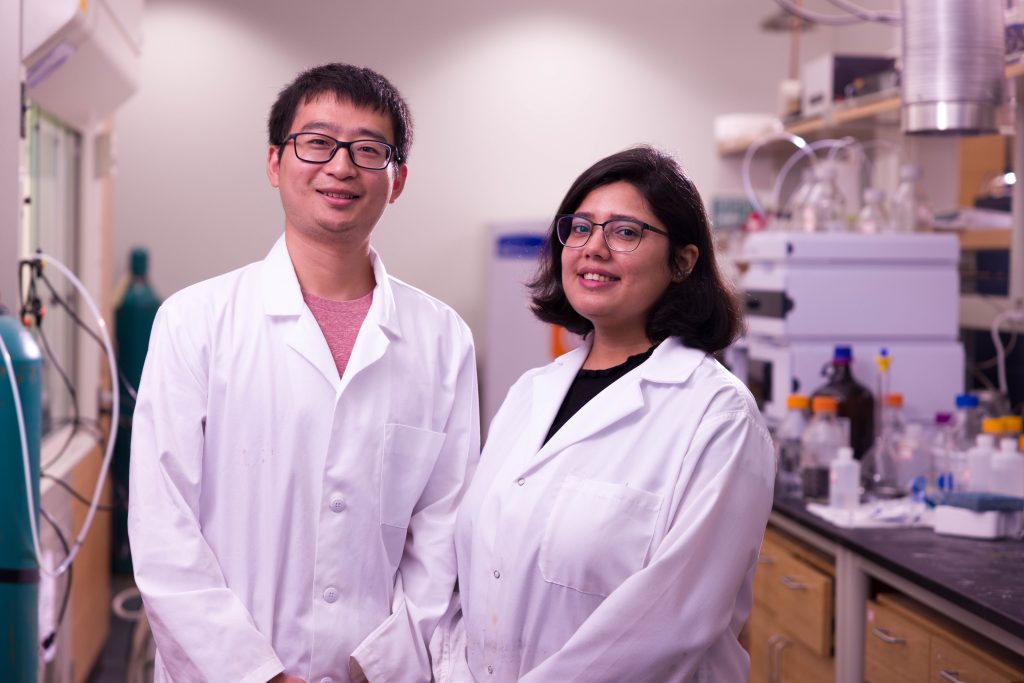New hydrogen harvesting process and high-impact publication
Author: Andre Namink
Author: Andre Namink

When Cyclone Engineering graduate students Hengzhou Liu and Arna Ganguly began working on a greener process for producing hydrogen from water or biomass, they were set on making discoveries that bring us closer to a “decarbonized” world.
The journey was more than worthwhile to take on climate change challenges, but Liu and Ganguly weren’t yet sure of the destination for their findings.
“We didn’t have a clear goal early on for where to publish our papers, so we just really focused on our research for about one and a half years,” Liu said.
Liu made key contributions on developing experiments, while Ganguly focused on the techno-economic analysis for the new approach.
The significance of the research team’s findings – using biomass-derived aldehydes rather than water electrolysis to double the hydrogen production rate, achieve industrial-level current density, and prove economic viability – landed Liu and Ganguly as co-first authors in the high-impact journal Energy & Environmental Science (EES) on the paper “Ultra-low voltage bipolar hydrogen production from biomass-derived aldehydes and water in membrane-less electrolyzers.”
Ganguly, a graduate student in mechanical engineering, said that publishing in EES was always the hope, but she had no idea it would actually happen.
But research group leaders Wenzhen Li, Herbert L. Stiles Faculty Fellow and professor of chemical and biological engineering, and Mark Mba-Wright, associate professor of mechanical engineering, were always supportive and confident that the team would succeed.
For both Liu, a Ph.D. graduate in chemical and biological engineering starting his postdoctoral research at Northwestern University, originally from China, and Ganguly, originally from India, the mentorship of Cyclone Engineering faculty was a primary reason for coming here to study.
Liu knew Li’s work in electrocatalysis was unique and significant, making him choose Iowa State University. Ganguly also sought to work with Mba-Wright and found outstanding mentorship.
“Everyone in the College of Engineering is very nice and welcoming, and I was really interested in working with Dr. Wright,” Ganguly said. “Dr. Wright and Dr. Li had been wonderful professors to work with”
Ganguly also found productive, positive collaborations with others in her lab group, including Liu.
“Hengzhou really helped me a lot to understand the system well enough to carry out my analysis,” Ganguly said. “All my lab mates have been of great help, and it’s been really fun to work hard and explore new areas. And I’m super proud we got published in such a prominent journal.”